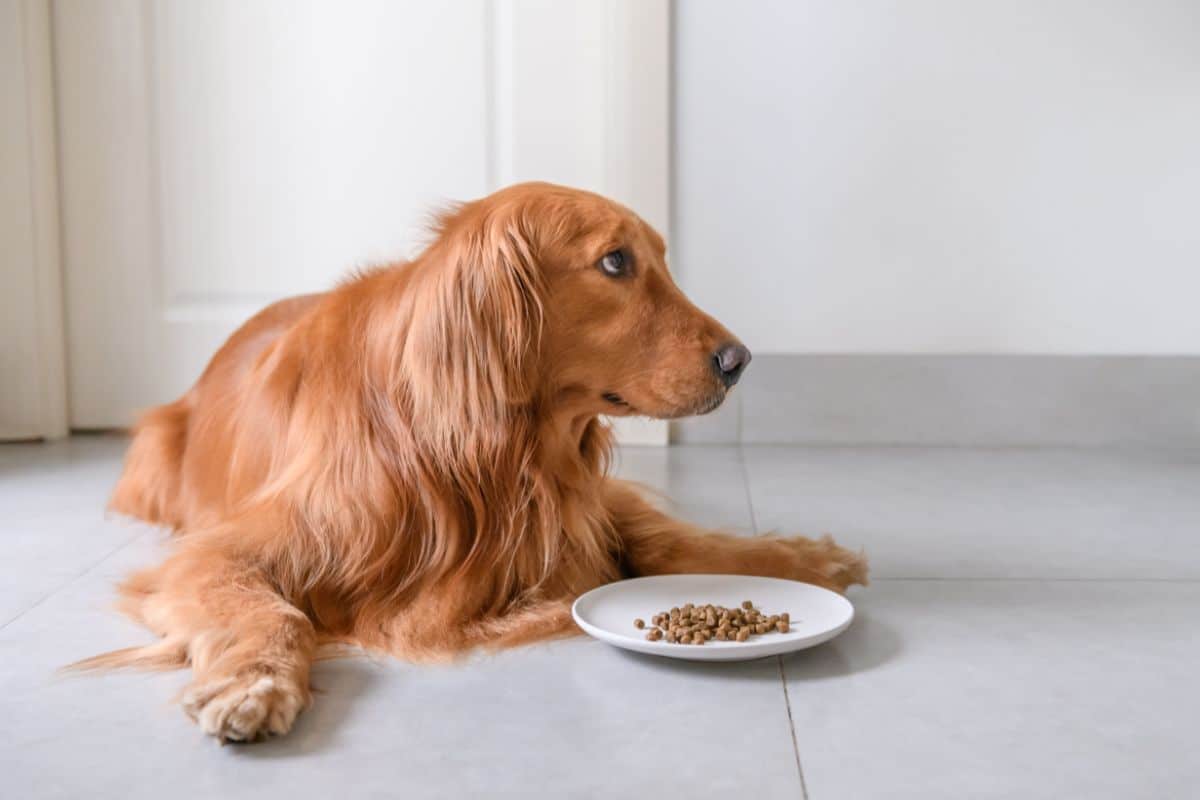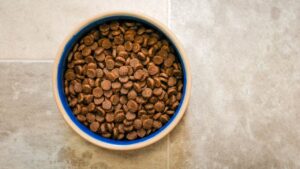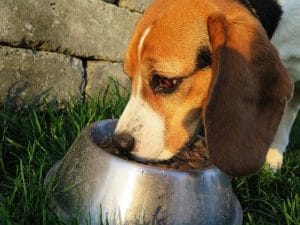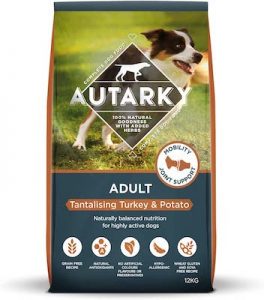In recent years, grain-free diets for dogs have gained popularity, and many pet owners are making the switch. However, the popularity comes with the responsibility of making informed decisions about your dog’s nutrition.
I say so because dog food allergies aren’t as common as we think.
A research study 2011 reported that only 5% to 15% of dogs exhibiting allergic symptoms are likely to have a food allergy. In contrast, a 2018 report by tails.com stated that the demand for grain-free dog food increased by a whopping 75% between 2016 and 2018.
That doesn’t make sense, does it? How can the demand for grain-free dog food far surpass the amount of dogs allergic to food? The answer is growing trends in human nutrition on social media have led to some misinformed decisions about pet nutrition.
So, how can you determine if your dog needs grain-free food?
Medically speaking, your dog may be allergic to grains (or gluten) if symptoms include itchy and dry skin, ear infections, inflamed paws, digestive issues, and infrequent behavioural changes. Consult your veterinarian if your dog exhibits these symptoms. Changing their diet on your own could make the situation worse.
What are the symptoms of grain allergies in dogs?

1. Skin Irritation and Rashes
Skin irritation is the most common indicator of a grain allergy among dogs.
Allergic reactions can manifest as raised bumps or rashes on your dog’s skin, leading to irritation and excessive scratching. The following redness and dry, flaky skin is easily noticeable.
Breeds like Bulldogs, Retrievers, Dalmations, Shih Tzus and Terriers can be particularly susceptible.
2. Frequent Ear Infections
If your dog frequently shakes their head or scratches their ears, it’s time for a vet visit.
Breeds with floppy ears, such as Cocker Spaniels and Basset Hounds, may be more prone to this symptom.
3. Hair Loss
Grain allergies can trigger hair loss conditions (like alopecia), leaving your dog with patchy fur.
Breeds like Dachshunds, Boxers, and Greyhounds may be more susceptible to hair loss due to allergies.
4. Inflamed Paw Pads & Chewing of Feet
Grain allergies can lead to inflammation and redness in your dog’s paw pads. The discomfort will cause your dog to limp or favour certain paws. It also leads to excessive licking and chewing of feet.
Breeds like Greyhounds, Boxers, and Dobermans may be more susceptible.
5. Digestive Issues
In some cases, grain allergies can affect your dog’s digestive system, leading to symptoms like diarrhoea, vomiting, or excessive gas.
Breeds like Beagles, Dachshunds, and German Shepherds may be more prone to digestive issues related to grain allergies.
6. Behavioral Changes
Allergies have been known to affect a dog’s behaviour. They may become irritable, anxious, or change their usual temperament. Watch for any unusual behaviour patterns that may warrant visiting the local vet.
Note: These symptoms are mere indicators of a possible allergy but cannot guarantee a diagnosis. If anything seems dodgy, talk to your vet.
What are grain allergies in dogs?
Grain allergies among dogs happen because their immune system mistakes certain proteins in grains as “harmful substances.” So, whenever a dog with grain allergy comes across them, their immune system causes inflammation, which manifests as an allergic reaction.
Imagine your dog’s immune system as a vigilant guardian, protecting its body from harmful invaders. Normally, the immune system works like an absolute miracle.
With allergies, this guardian becomes too overzealous. It mistakes certain proteins in grains as threats and launches an immune response. This immune response triggers various symptoms, such as skin irritation and digestive problems.
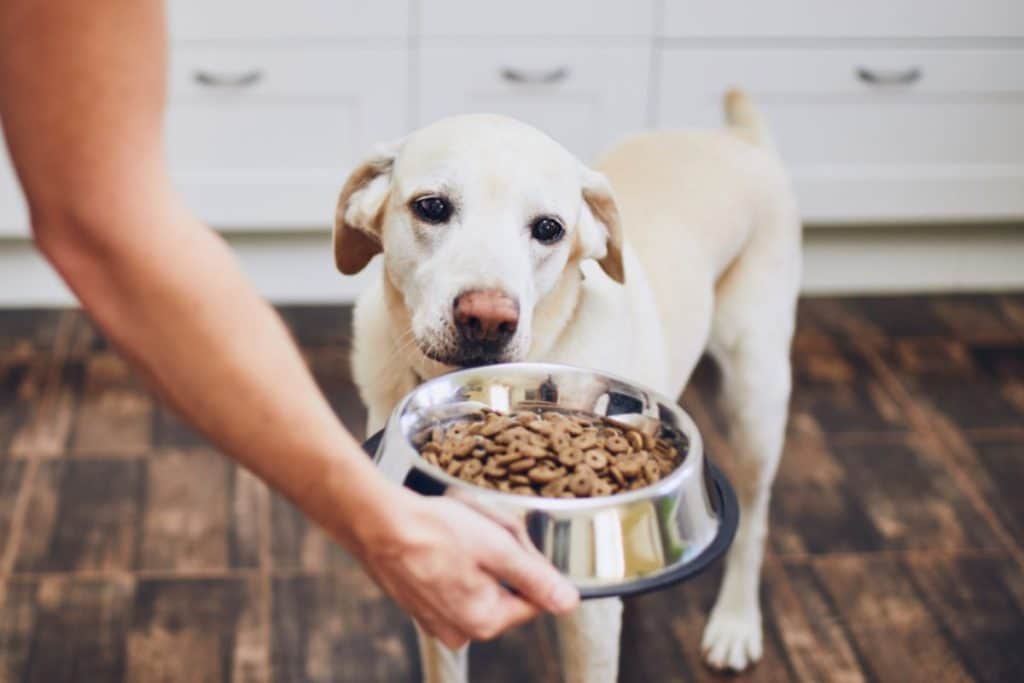
The allergic reaction can lead to uncomfortable symptoms and health issues for your furry friend.
On top of all this, it’s important to note that grain allergies are distinct from gluten intolerance, although the symptoms can be similar. Similarly, gluten-free dog food is not the same as grain-free dog food. And both have dissimilar use cases.
Gluten is a protein found in wheat, barley, and rye, and gluten intolerance primarily involves sensitivity to this specific protein. Grain allergies, on the other hand, can encompass a broader range of grains and proteins.
Here’s an in-depth research study from Jan 2007 by A. Verlinden et al. if you want to understand dog food allergies in detail.
1. How are grain allergies treated in dogs?
Diagnosis: Your vet will start with a thorough examination. They may recommend allergy testing or an elimination diet to pinpoint the specific allergen. This process takes time, patience, and careful monitoring.
Treatment: Once the allergen is identified, treatment options can vary.
Your veterinarian may suggest dietary changes, such as switching to a grain-free dog food or a hypoallergenic diet that excludes the allergen. Medications like antihistamines or steroids are usually prescribed to manage symptoms.
Lifestyle Changes: Managing a dog’s grain allergy often involves lifestyle adjustments. Nonetheless, it’s a pretty easy fix once the allergen is identified.
2. Are some breeds more prone to grain allergies?
While grain allergies can affect dogs of any breed, certain breeds may be more predisposed to these allergies. Common dog breeds in the UK include Bulldogs, Terriers, Retrievers, Dachshunds, Beagles, and Boxers.
3. How to prevent grain allergies in dogs?
Most allergies in dogs are genetic and cannot be prevented completely. However, many dog allergies can be maintained with proper nutrition and lifestyle.
A 2021 research study from Finland found that a balanced diet with raw animal-based food during puppyhood can protect against allergy/atopy skin signs (AASS) in adulthood.
AASS signs indicate an allergic skin condition called atopic dermatitis.
What is Grain-Free Dog Food?
Grain-free dog food is exactly what it sounds like – canine nutrition that excludes common grains such as wheat, corn, rice, and barley from its ingredients.
Instead of relying on grains for carbohydrate sources, these diets often use alternative ingredients like potatoes, sweet potatoes, peas, or lentils.

1. Can Dogs eat grains?
A common misconception that has fueled the grain-free craze is the belief that grains are inherently bad for dogs. However, research suggests otherwise.
According to the tails.com report, grains like wheat are considered healthy, wholesome, and nutritious foods for dogs when included in a balanced diet.
While some dogs may indeed have grain allergies or sensitivities, the true prevalence of these issues is far lower than what pet food marketing claims.
For the majority of dogs, grains are not only safe but can also provide essential nutrients.
2. Pros & Cons of Grain-Free Dog Food
Pros of Grain-Free Dog Food:
- Potentially suitable for dogs with allergies
- Alternative carbohydrate sources
- High protein content
- Reduced risk of gluten sensitivity
Cons of Grain-Free Dog Food:
- Lack of grain fibre
- Limited ingredient options for a variety
- Costlier than traditional dog food
- Not necessary for all dogs, potentially overhyped
Frequently Asked Questions (FAQs)
1. Is grain-free food recommended for overweight or obese dogs?
Grain-free food alone is not a guaranteed solution for overweight or obese dogs. Weight management in dogs requires a holistic approach that includes portion control, exercise and monitoring calorie intake.
It’s best to consult your veterinarian and request a tailored weight management plan for your dog.
2. Is grain-free food the same as gluten-free dog food?
Grain-free dog food excludes common grains from its ingredients. However, it can still contain other carb sources like potatoes or peas. Gluten-free dog food, in comparison, specifically excludes gluten-containing grains like wheat, barley, and rye.
While some grain-free options may also be gluten-free, not all grain-free diets guarantee the absence of gluten.
If your dog has been diagnosed with gluten sensitivity or celiac disease, ask your vet for options.
